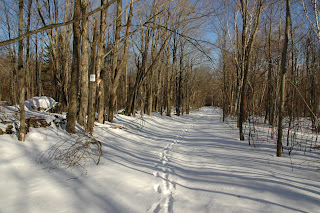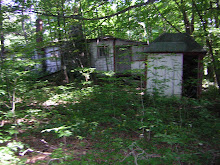Almost everyone in the western world
takes notice, at least in passing, when the thirteenth of a month
falls on a Friday. Many people are blatantly superstitious about
such a day- some considering it lucky, some unlucky- but widely associated with luck in some fashion. In fact,
considering that the belief in the significance of the day is only
about a century old, it is maybe even a little surprising how nearly
universal it is in the English-speaking world, and beyond.
Individually, though, superstitions
about the number thirteen (the most popular superstition in the
world, according to author Nathaniel Lachenmeyer) and Fridays in
general have existed for a great deal longer. Both have roots in the
Christian gospels- the old “thirteen at a table” rule (which
appears to be the oldest superstition about the number), after that
fiasco at the Last Supper, and the universal agreement in scripture
that Christ’s execution took place on a Friday. Until recent
decades, executions in general were typically carried out on Friday,
contributing to its somewhat grim reputation.
Since the 1980 debut of Shaun
Cunningham’s film of that title and its subsequent franchise,
Friday the 13th has taken on a somewhat ‘spookier’
connotation in, and when it takes place in October some even take it
as cue to start getting in Halloween mode early. For some though, it
can be a cause of serious anxiety. There is even a name for this:
triskaidekaphobia, an overwhelming and irrational fear of
Friday the 13th (as opposed to jasospacephobia,
which is merely an extreme repulsion to Friday the 13th
Part X).
Some people have even more convoluted
ways of relating to the pop culture of the day. This is the story of
how Friday the 13th came to life and terrorized the town
of Greenfield Massachusetts through Halloween, 1988. That is, at
least as much of it as ever leaked out to the press.
--
 |
| Mark Branch |
Mark Branch was an 18 year old grocery
store clerk with an avid interest in slasher films. As the clerk at
Video Expo 1 in Greenfield put it later: “He rented strictly gore,
period. The gorier, the better.” He was particularly entranced
with the Friday the 13th series, and its machete-wielding protagonist, Jason Vorhees.
Some might have called it an obsession.
Perhaps that’s the way it might have
been described by Sharon Gregory, a freshman psychology major at
Greenfield Community College. Sharon was apparently intrigued enough
by Branch to do some sort of psychological profile on him.
Curiously, police were later unable to confirm that this was done as
part of her course work. Just how well acquainted the two were is
opaque, but what is known is that Mark knew that Sharon had written
up a psychological profile of him, and that he wanted it.
On the night of October 24, Mark donned
Jason’s trademark hockey mask and big black boots, and headed for
Sharon’s apartment. What exactly transpired will never be known.
Her twin sister found her mutilated body in the bathroom, having been
stabbed repeatedly in the head, chest, and abdomen.
Police honed in on Branch as a suspect
immediately, and suspicion of his guilt became a growing certainty
when they found his bloodstained car abandoned near the woods in
nearby Buckland. A massive manhunt ensued, but the Jason copycat
remained undiscovered. As Halloween approached and more and more
sensational media coverage came out about Branch’s obsession with
Friday the 13th, area residents became increasingly
frightened. Greenfield cancelled its Halloween parade and downtown
activities, and confined trick-or-treat to afternoon hours. The
local movie theater even agreed to postpone the release of Halloween
IV- though how exactly that helped is somewhat unclear. Perhaps they
feared that Branch would show up to attend the film- after all, Jason
is, to a large extent, just a rip-off of Michael Myers.
Everyone seemed convinced that Branch
would show up around Halloween for some kind of climactic slaughter,
demonstrating that perhaps he was not the only one who’d seen one
too many slasher movies. In fact, Halloween passed without incident,
and also without new breaks in the search for Branch, despite the
involvement of reputed psychic John Monti. There were no new
developments in the case until late November, when a hunter
discovered Branch’s body hanging from a tree in the woods of
Buckland. The coroner determined that Branch’s suicide took place
shortly after the slaying of Sharon Gregory.
Attempts to draw out more sensational
details of the case, particularly those surrounding Branch’s
obsession with Friday the 13th, were made by local
newspapers, who petitioned the courts to release documents pertaining
to the murder and to evidence confiscated from Mark’s home. The
motions were successfully blocked by an attorney for his family, and
the story essentially ground to a close, wrapping up with a quote
from Greenfield police chief David McCarthy:
“He was so entrenched with Jason
that he had to have the Final Chapter in his own feelings. He wanted
to know what it felt like to live out the part of Jason,'' McCarthy
said.
--
Sources:
United Press International: Oct.
29, Nov. 1, Nov. 5, Dec. 1, 1988
Associated Press: Oct. 29, Nov.
1, 1988
Syracuse Daily Herald Oct 30,
1988
Boston Globe Nov. 30, 1988









































